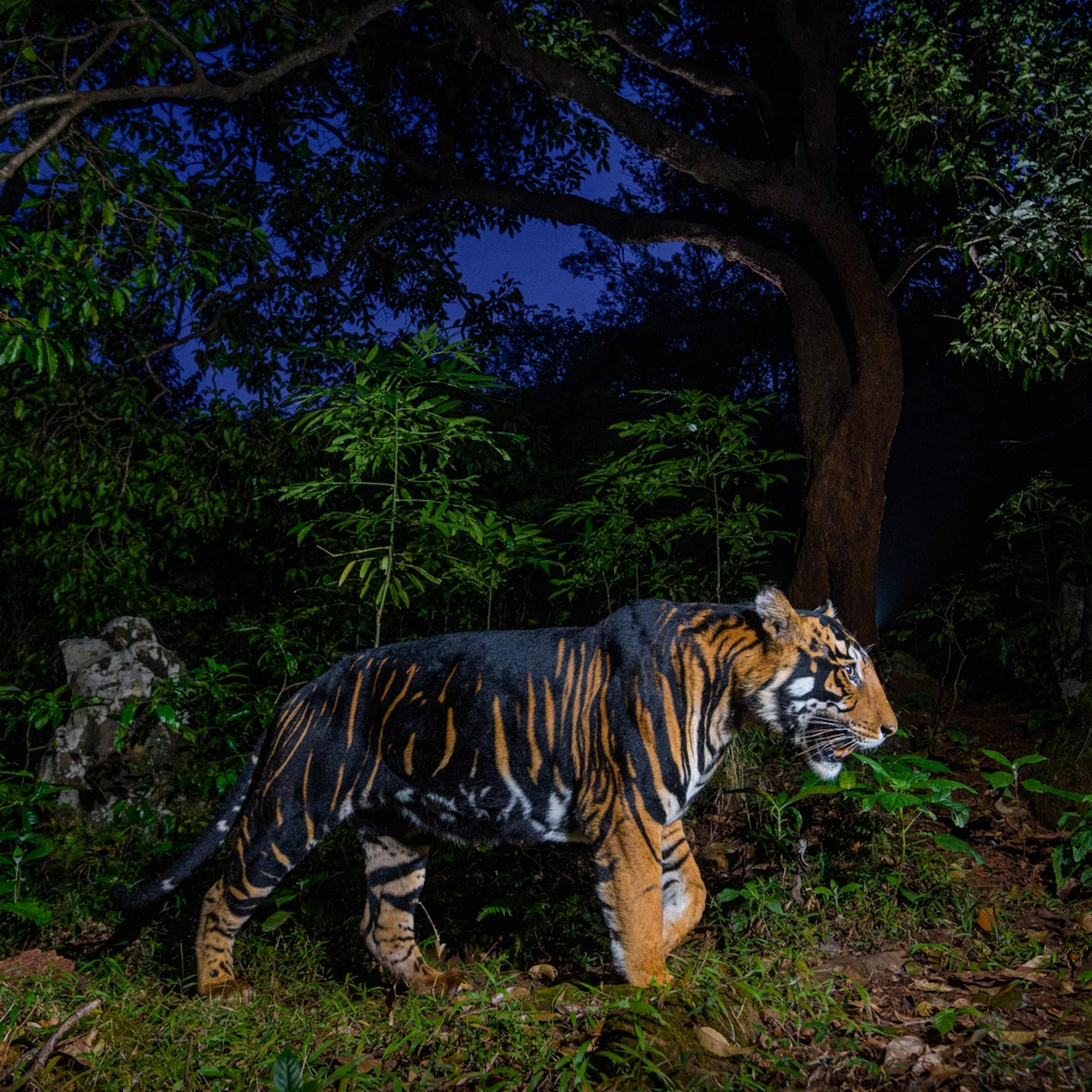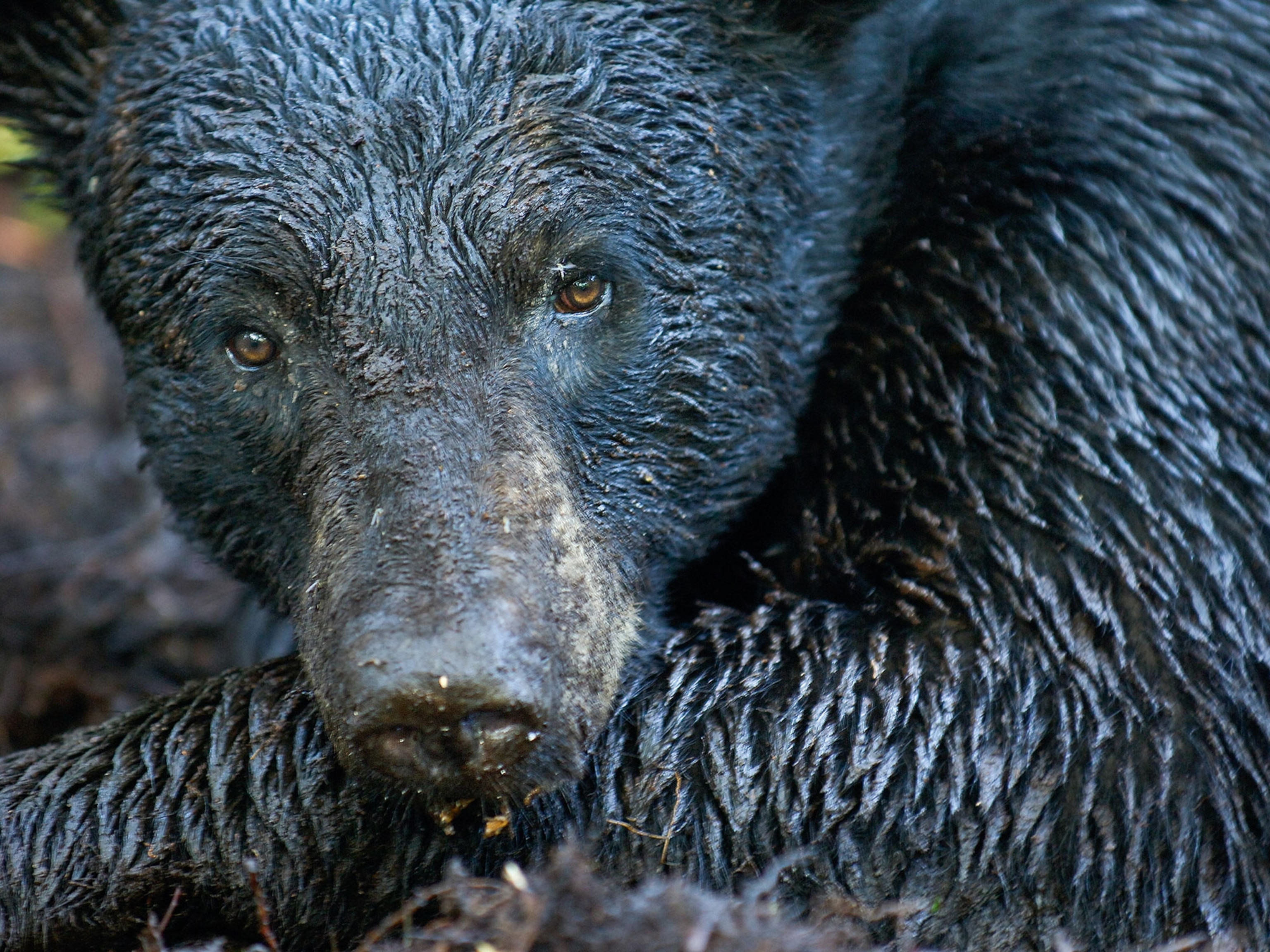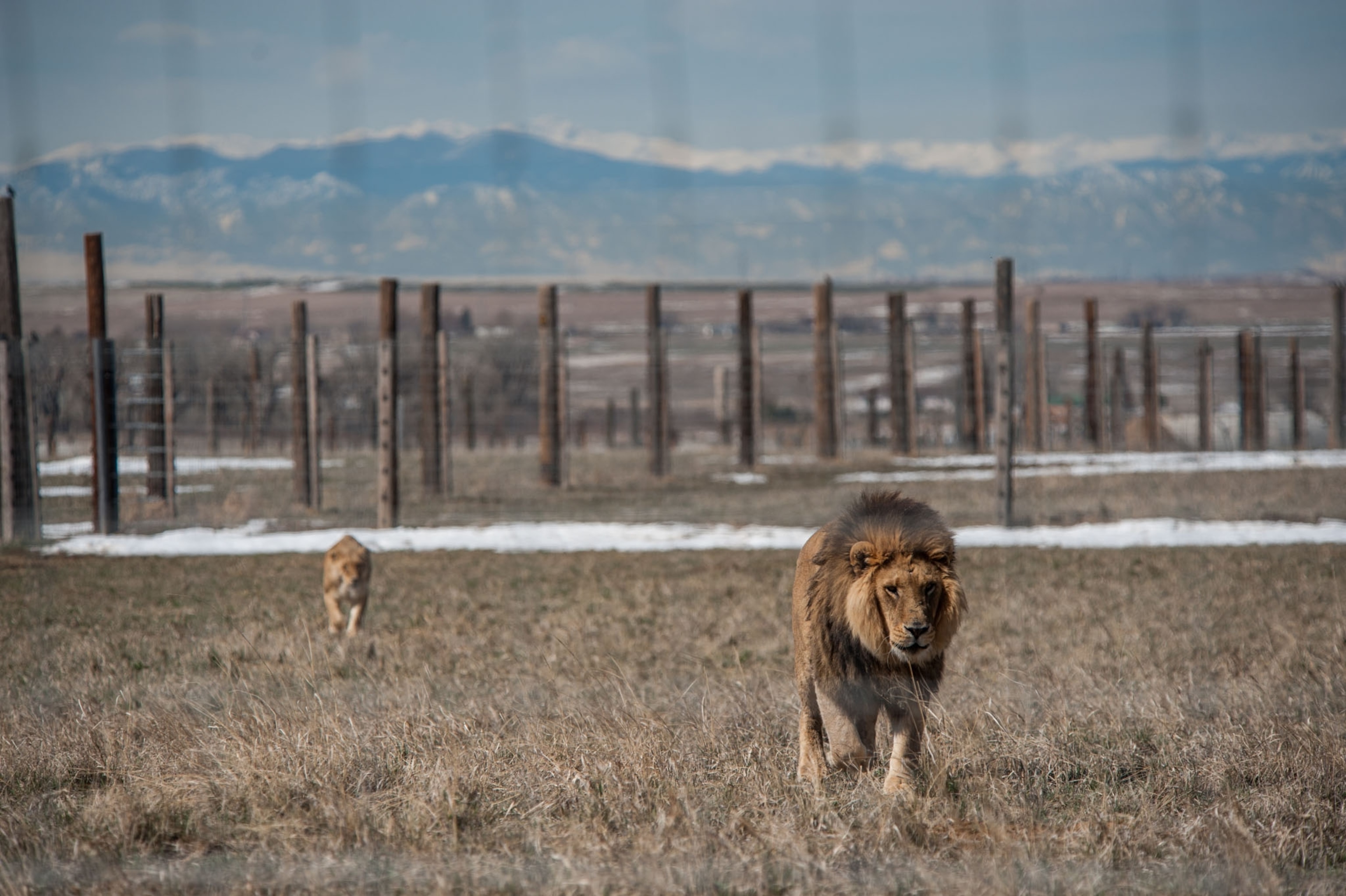
An Unlikely Home for Rescued Lions, Tigers, and Bears
A sanctuary on the high plains of Colorado gives abused captive wild animals a new lease on life.
The high plains of eastern Colorado would seem an unlikely place to hear the roar of African lions, the growls of Kodiak bears, or the snarling of Bengal tigers. But a refuge in the small town of Keenesburg has brought together one of the largest and most unusual collections of wild predators anywhere in the country, possibly the world.
Stretching across 720 acres 30 miles northeast of Denver, the privately run Wild Animal Sanctuary hosts a staggering menagerie of wildlife—nearly 400 animals, most of them large carnivores rescued from illegal or inhumane captivity. There are black bears and grizzlies, African lions and American bobcats, Siberian lynxes and South American jaguars.
They’ve been freed from shopping malls, taxidermy shops, and amusement parks. They’ve been confiscated from filthy backyard pens and fly-by-night circuses, even seized from the homes of convicted drug dealers. They’ve been drugged, beaten, left to lie in their own excrement in tiny cages.

By virtue of their size, voracious appetites, and predatory instincts, many had simply outgrown their owners’ ability to care for them. Several had reached the point of despair and self-mutilation. Some faced imminent euthanasia.
Whatever their species and individual histories, all of these unfortunate creatures point to a growing and largely hidden crisis: the plight of tens of thousands of wild animals held in captivity, often in appalling conditions, around the United States and the world.
A New Lease on Life
The animals lucky enough to reach the sanctuary have been granted a new lease on life. They’re rehabilitated and, when possible, integrated into social groups. They’re free to roam the grasslands in large-acreage enclosures and to shelter from extremes of heat and cold in pre-excavated dens that extend 40 feet underground. It’s not exactly living in the wild, but almost.
“Nothing is better than the wild for these animals,” says Theresa Kempf, who looks after the sanctuary’s 26 wolves and 10 foxes. “Hopefully this is a close second.”

Cooped up in cages all their lives, most of these creatures had never trodden on actual earth before arriving here. One of the great perks for Kempf is to see the animals’ transformation as they acclimate to their new surroundings. “To see them get excited about life, getting excited about food, and excited to run around and play,” she said, “is a pretty neat thing to watch.”
The 150,00 to 200,00 visitors who come here each year get to watch the animals from a mile-long elevated walkway that winds through the sanctuary. Another half mile of boardwalk is under construction. The walkway not only provides guests with an excellent vantage point but also reduces the stress that territorial-minded animals experience in many zoos, where legions of strangers stare at them at eye level on what they perceive to be the very edge of their turf.
It’s an innovation that sanctuary founder and executive director Pat Craig credits to trial and error. “I noticed that when I was working up on my roof, the animals didn’t notice me, even when I was operating loud power tools,” says Craig, who sees himself as a pioneer in animal psychology and the care of captive wildlife. “The animals will disconnect once you’re higher than 10 feet.”
Perhaps the biggest innovation has been Craig’s uncanny eye for assimilating animals into cohabiting groups. He’s integrated lions into prides, wolves into packs. The process can take months, but even lone predators like tigers are successfully placed in family groups at the sanctuary.
“Solitary animals in the wild are solitary because they compete for food,” he says. “Here they can live freely in big open spaces, be happy, and live together.” It’s an idea that flew in the face of common wisdom. “Circus and Hollywood trainers thought I was nuts,” Craig says. “They told me, ‘You’re going to get yourself killed.’”
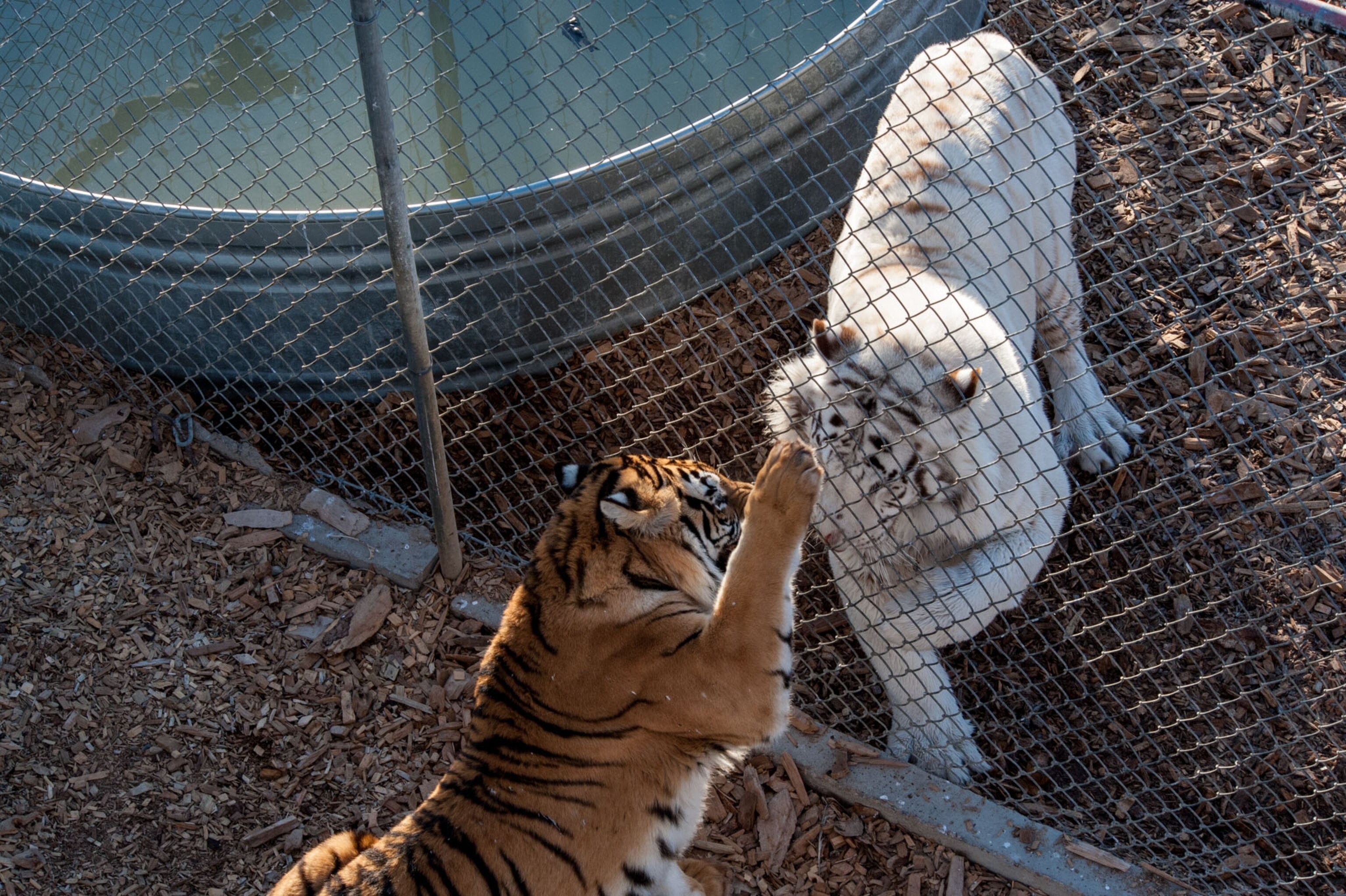
Learning how to deal with large predators came at a price. Craig ended up in the hospital with bite and claw wounds more than 30 times in his first 15 years of working with the predators. “They were afraid,” he explains. “They were definitely hurting me, but they weren’t trying to kill me.”
Roots of a Refuge
Craig founded the refuge in 1980 on his family’s 15-acre farm after visiting a friend who was working in a small zoo in North Carolina. He noticed a number of “surplus animals”—tigers, bears, and lions that were going to be euthanized because the zoo had no place to keep them. He thought that maybe he could do something about it. “The big predators were getting the short end of the stick,” Craig says. “No one wanted them. They were dangerous and expensive to feed.”
Back in Colorado, Craig got his small refuge certified by federal and state officials. He outfitted the back of his pickup truck and set out to save animals from around the country. “I had no idea what I was doing,” he says, smiling ruefully at the memory of those early days of trial and error. “There was no information available on how to transport these animals.”
Craig soon realized the scope of the problem was far bigger than he’d imagined. He was getting calls from zoo staff in just about every state in the union who were anxious to find a decent home for their overflow of wild animals. “Pretty soon it became an all-engulfing mission. Round the clock.”
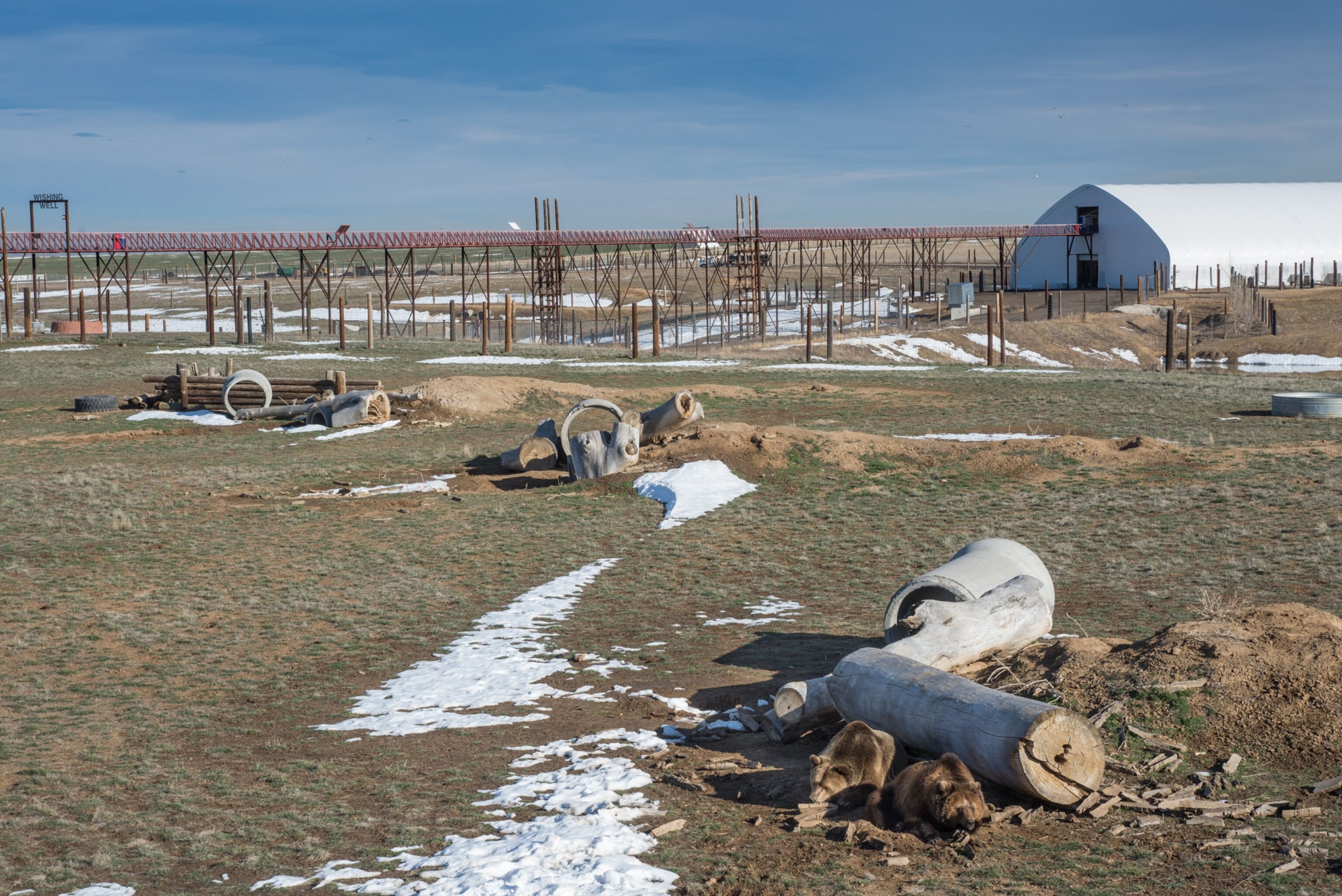
As his menagerie grew, he saw the need for more land to achieve his dream of giving the animals something that approximated a natural life in the wild. In 1994, he and his wife purchased 160 acres on the plains northeast of Denver and have been buying up adjacent farmland ever since.
It wasn’t until 2002 that the sanctuary began admitting visitors, for strictly educational purposes. The top priority remains the well-being of the animals, not the amusement of humans. “You’re not here for entertainment,” says Craig, “but to learn about this crisis, to get upset and do something about it.”
Thirty states allow some form of private ownership of exotic pets, and nine require no licensing whatsoever for private citizens to own wild predators. Part of Craig's mission is to change the laws to make it much harder to own and breed wild animals.
A Major Operation
What began as Craig’s one-man undertaking has since grown into a major operation—with 45 staff members, 160 volunteers, and an annual operating budget of nearly $13 million. Half comes from cash contributions, the rest from in-kind donations, mostly food and building materials, like fencing, concrete, and lumber.
The retail giant Walmart provides two to three million dollars’ worth of food a year that would otherwise go to waste. A local trucking company pitches in to haul the fare from 37 superstores along Colorado’s Front Range to the sanctuary’s Carnivore Nutrition Center. Inside the refrigerated warehouse, volunteers sort produce, meat, and fish into nutritious bundles for the animals. It’s no small task when you’re serving dinner for a household of 110 black bears, 43 grizzlies, 73 lions, 55 tigers, and 26 wolves, among others.
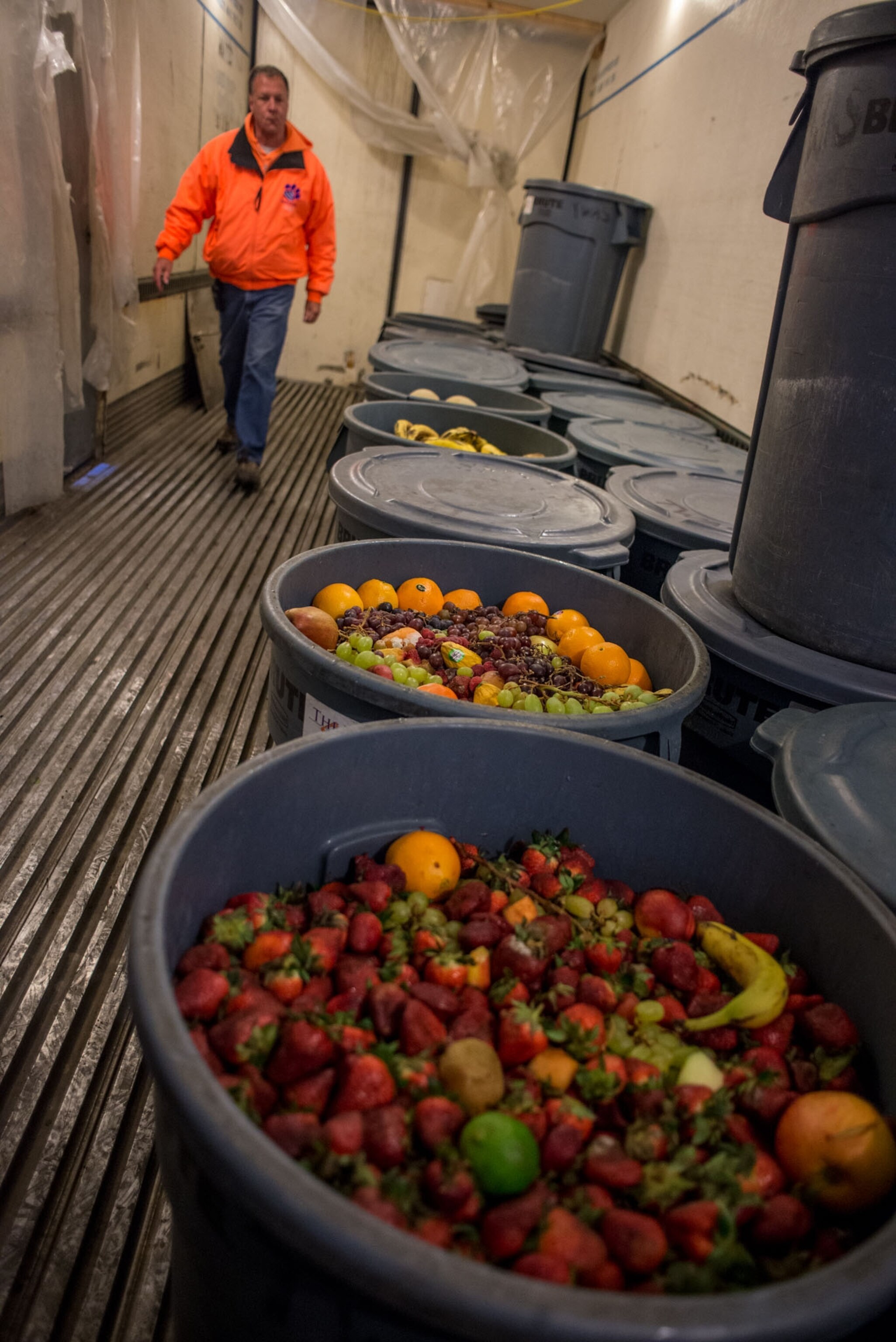
Every one of the animals has a name. Staffers and volunteers know them all—and know their individual stories. “That’s Yuma,” said outreach director Kent Drotar, pointing toward a thickly maned lion just as it let out a thunderous roar. “He’s saying, ‘I’m here; this is my territory.’ He came here from a circus in Mexico in 2008.” Another male responded with a roar of his own from a separate enclosure a hundred yards away. “And that’s Ike. The male’s main job is to protect his pride, to keep other lions away.”
More and more, the animals are arriving from abroad: brown bears from Spain, a white tiger from Mexico, cougars from Argentina. Twenty-five circus lions arrived from Bolivia in 2011 aboard a DC-10 cargo plane. The animals were eventually divided into four prides. The enormous canopy-type structure hastily erected to accommodate them is now used as an intake center for animals in the initial stages of rehabilitation.
“These animals have won the lottery,” says Drotar. He accelerates his ATV up a dirt path beside an enclosure of grizzlies. One of the bears, named Natasha, is particularly fond of chasing the vehicle. She outraces us from her side of the double fence (the fences are also electrified, since bears are good climbers.) Her speed is astonishing.
“But this isn’t the wild,” Drotar says, the smile disappearing from his face. “They’re not hunting for their food, looking for a mate, or raising their young.”
He peers through the fencing at Natasha as she rears up on her hind legs. She’s a towering hulk.
“That’s the great crime of captive-born wildlife,” he says. “They can never be the wild animals they were supposed to be.”
Read more stories about wildlife crime and exploitation on Wildlife Watch. Send tips, feedback, and story ideas to ngwildlife@natgeo.com.


